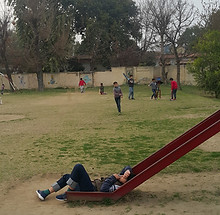
Introduction to Autism Spectrum Disorder

What is ASD?
ASD (Autism Spectrum Disorder) is a neurodevelopmental disorder characterized by impairments in social communication and accompanied by repetitive, restrictive behaviors.
ASD is a "spectrum" disorder as it varies widely in severity and the type of symptoms experienced by an individual.
"If you've met one person with autism, you've met one person with autism"
Dr Stephen Shore
What is the difference between DSM and IDEA diagnosis of ASD?
DSM
The Diagnostic and Statistical Manual of Mental Disorders (DSM) is used by clinicians to diagnose psychiatric illnesses. It provides the clinical diagnosis of Autism Spectrum Disorder.
IDEA
The Individuals with disabilities Education Act provides the administrative diagnosis of autism determining eligibility for special services in USA.
What are the possible causes of ASD?
The exact cause of ASD is unknown, but research clearly points to genes as one of the causative factor (Boutot, 2017).
1 in 150
(CDC-2000)
1 in 88
(CDC-2008)
1 in 36
(CDC-2020)
Identified Prevalence of Autism Spectrum Disorder in USA
What are the main characteristics of ASD?

Impairments in Social Communication and Social Interaction
For example:
Failure to respond when name called
Lack of imitative play
Absence of interest in peers

Hypo- or hyper- reactivity to sensory input
For example:
Apparent indifference to pain
Excessive smelling of objects
Significant aversion to having hair cut

Restrictive pattern of Behaviors, Interests or Activities
For example:
Hand flapping
Lining up of toys
Echolalia

Language Impairments
For example:
Expressive and receptive language delay
Problem with language pragmatics
Use of overly formal language
What are EBPs?
Evidence Based Practices or EBPs are scientifically proven practices. Those practices that have sufficient number of empirical demonstrations of efficacy through high quality, peer reviewed journal articles and replications of those demonstrations by independent research groups.
Why use EBPs in the management of ASD?
There are many fad and pseudo-scientific treatments available. It is important for families and teachers managing children with ASD to be aware of the EBPs, as ineffective interventions waste both time and resources.
The NCAEP (National Clearinghouse on Autism Evidence and Practice) team reviewed articles published from 1990-2017 and characterized 28 practices as EBPs for children, youth and young adults with autism.
Click the button to view the list of those EBPs:
Want to find out more about ASD?
To learn more about Autism Spectrum Disorder click the page buttons:
-
ASD Intro : Introduction to Autism Spectrum Disorder
-
ASD Methods : Education of Children and Youth with Autism Spectrum Disorder
-
ASD Assessments: Application of Assessment Information for Children & Youth with Autism Spectrum Disorder
-
HFA : Methods for Learners with High Functioning Autism Spectrum Disorder
-
Resources: Resources for parents, family members, doctors, paraprofessionals and educators
-
References: References of the information provided in this website